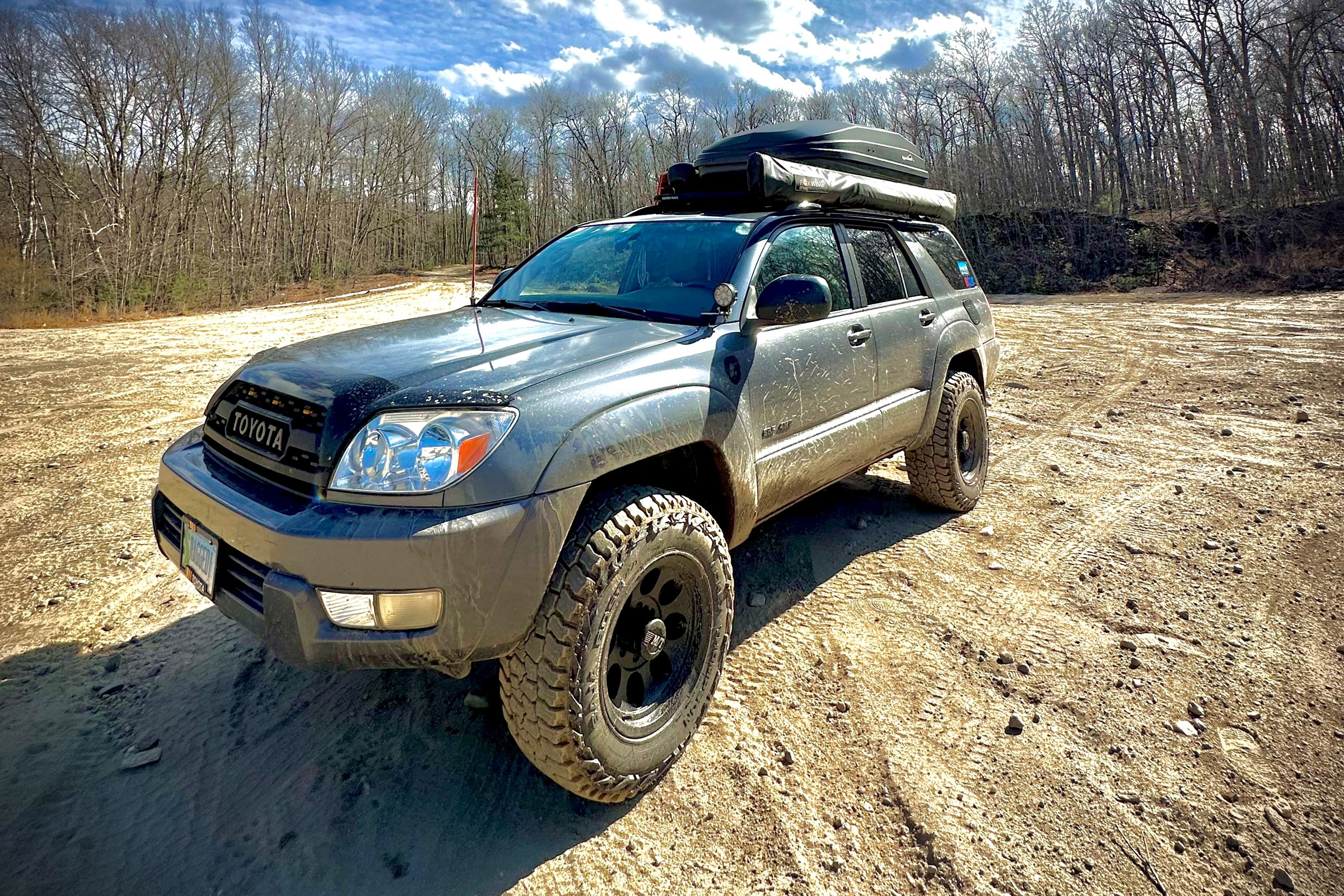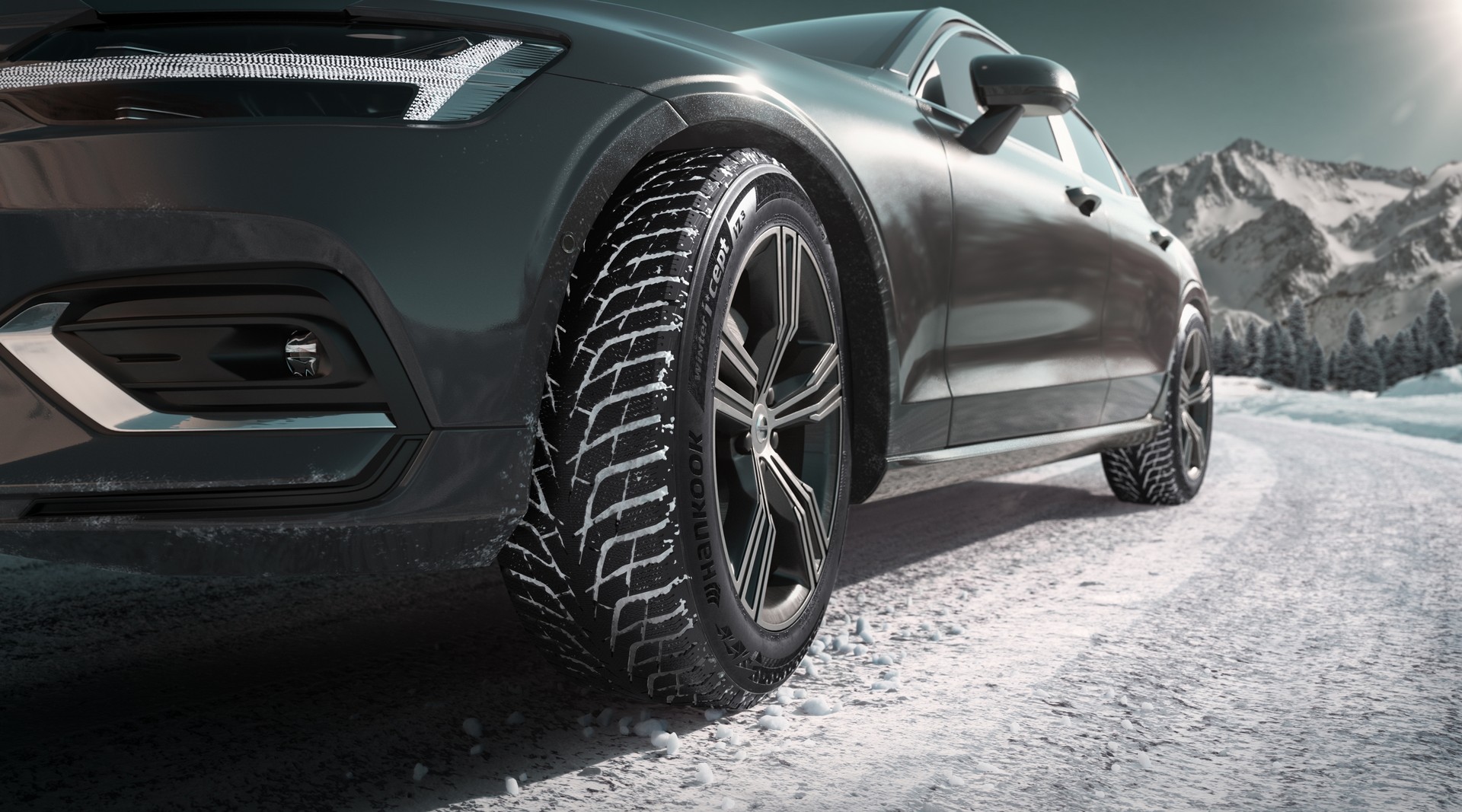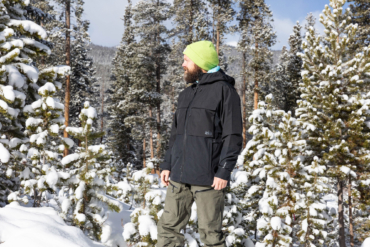When winter weather arrives, the show must go on — but keep the drama at a minimum with a set of trustworthy snow tires. Now, when the weatherman calls for wintery conditions, you can make white-knuckle winter drives a thing of the past with a quality set of snow tires.
The best snow tires for you will depend on your vehicle and your location, which is why we’ve broken up our list of snow tires into a range of options to cover everything from small cars and sedans to full-size trucks and SUVs. Our Motors Editor Bryon Dorr ensures this guide includes the best of the best, and brings a wealth of knowledge from his decades plus of pushing adventure vehicles to their limit. We’ve also included some heavy-duty studded tires for the worst winter weather you might encounter, as well as a snow-oriented performance tire in case you get mild winters with only an occasional dusting of the white stuff.
Either way, you should be able to find a set of tires that suits both your typical winter conditions and your vehicle on our list of the best snow tires. Take a look at our Buyer’s Guide and FAQ section for a wealth of info about what you need to consider when shopping for snow tires, and check out our comparison chart for a side-by-side lineup of pricing and specs. Before you order a set of tires, look over the sizing guide to ensure you get the correct size.
Editor’s Note: Updated on March 5, 2025, this guide now highlights our new favorite budget snow tire, the Hankook Winter i*cept iZ3.
The Best Snow Tires of 2025
Michelin Latitude X-Ice Xi2
- Rim sizes: 15-21 in.
- Price range: $145-$260 per tire
Pros
- Excellent traction on ice and snow
- Effective siping
- Meets severe snow service requirements
- Drives like an all-season tire
- Resistant to hydroplaning
Cons
- Reduced traction in deep slush and slow
- Not as grippy as studded tires
- Not intended for season-long deep snow
Hankook Winter i*cept iZ3 Winter Tire
- Rim sizes: 15-16", 18-19"
- Price range: $93-$152
Pros
- Low price
- Excellent traction on ice and snow
- Exceptional treadwear warranty for a winter tire
- Reasonable noise levels
Cons
- Not the quietest in the class
- Harder to find than some competitors
Bridgestone Blizzak WS90
- Rim sizes: 15-21 in.
- Price range: $145-$260 per tire
Pros
- Drives like an all-season tire
- Terrific wet and ice performance
- Resistant to hydroplaning
Cons
- Not intended for season-long deep snow
- Some reviewers report poor traction in slush
Nokian Hakkapeliita 10
- Rim sizes: 14-20 in.
- Price range: $150-$430 per tire
Pros
- Come studded
- Excellent on ice
- Durable
Cons
- Expensive
- Noisy on dry roads due to studs
Toyo Open Country A/T III
- Rim sizes: 15-22 in.
- Price range: $115-325
Pros
- Stellar traction and performance on any terrain or surface conditions
- Steering is precise and responsive to natural effort
- Great snow grip
- Accomplished at towing and carrying large loads
- Sturdy appearance looks good, and flaunts its intentions
Cons
- Noise level is not ideal
- On-road performance isn’t the Open Country AT3’s strength
- Decreased fuel economy compared to all-season tires
- Deep mud and snow can get packed
Firestone Winterforce 2 UV
- Rim sizes: 15-18 in.
- Price range: $105-$171 per tire
Pros
- Excellent traction in snow
- Good performance in both wet and dry conditions
- Responsive
Cons
- Noisy on dry roads
Continental Viking Contact 7
- Rim sizes: 15-22 in.
- Price Range: $115-$321 per tire
Pros
- Exceptional handling capabilities in the snow
- Terrific traction and acceleration on ice
Cons
- Braking performance on wet surfaces
- Road noise
Nitto EXO Grappler AWT
- Rim sizes: 17-20 in.
- Price range: $220-$502 per tire
Pros
- Excellent traction in deep snow and on ice
- Off-road capable
- Studdable
Cons
- Expensive
- Rim sizes: 14-20 in.
- Price range: $87-$203 per tire
Pros
- Studdable
- Severe Snow Service Rated
- Wide range of sizes
Cons
- Aggressive tread pattern not ideal for dry roads or warm weather
- Rim sizes: 18-22 in.
- Price range: $404-$665 per tire
Pros
- Designed for high-performance driving
- Fit sports cars, coupes, and sedans
Cons
- Not meant for severe winter conditions or deep snow
- Expensive
- Rim sizes: 14-20 in.
- Price range: $103-$280 per tire
Pros
- Studdable
- Sturdy and responsive in cold weather conditions
Cons
- Not ideal in deep snow
- Rim sizes: 14-15 in.
- Price range: $83-$90 per tire
Pros
- Affordable
- Decent traction in all conditions
Cons
- Limited sizes
- Not as aggressive as other snow tires
Snow Tires Comparison Chart
| Tire | Price Range (per tire) | Rim Sizes | Studdable |
|---|---|---|---|
| Michelin Latitude X-Ice Xi2 | $145- $260 | 15-21″ | No |
| Hankook Winter i*cept iZ3 | $93-$152 | 15-16″, 18-19″ | No |
| Bridgestone Blizzak WS90 | $145-$260 | 15-21″ | No |
| Nokian Hakkapeliita 10 | $150-$430 | 14-20″ | Yes |
| Toyo Open Country A/T III | $115-$325 | 15-22″ | No |
| Firestone Winterforce 2 UV | $105-$171 | 15-18″ | Yes |
| Continental Viking Contact 7 | $115-$321 | 15-22″ | No |
| Nitto EXO Grappler AWT | $220-$502 | 17-20″ | Yes |
| Cooper Evolution Winter | $87- $203 | 14-20″ | Yes |
| Pirelli P Zero Winter | $404-$665 | 18-22″ | Yes |
| Sumitomo Ice Edge | $103-$280 | 14-20″ | Yes |
| Goodyear Ultra Grip Winter | $83-$90 | 14-15“ | Yes |

Why You Should Trust Us
This guide is curated by our esteemed Motors editor, Bryon Dorr. A regular work day for Bryon involves testing out high-performance vehicles, documenting the latest and greatest overlanding gear with photos and video, and writing detailed and informative reviews of all things automotive for GearJunkie. This busy man knows a thing or two about where the rubber meets the road, specifically tires, from over two decades of using and abusing them on rugged desert race courses and overland adventures.
Featured here are a variety of tires for different vehicles and applications, from work-ready trucks to performance vehicles that might not be the best choice for winter driving. In between, there are several choices for folks who need safer, reliable winter tires for their SUV or minivan. We’ve also taken care to include studdable options for people who will be augered into snowy mountain life all winter long.
If you’re out in snowy mountain weather this winter, don’t forget to carry a set of chains, as some winter traffic restrictions will require them, even if you have snow tires. If you’re in the market for some adventure tires for the warmer months, have a look at our guides to the best all-terrain tires and the best mud tires. For more info about the advantages of each tire type, check out Gearjunkie’s Talking Tires article.
Buyer’s Guide: How to Choose Snow Tires
You should consider a few factors when picking the best snow tires. First, determine your budget. You should also consider where you live and how much snow you typically get during the winter. If you have very mild winters, you may be fine with a set of all-season tires.
However, if you see regular snowfall or icy road conditions, you’ll want to consider upgrading to snow tires. For locations with severe winter weather, you might even want a studded set of snow tires.
It’s worth noting that all-season tires are not the same as snow tires. Though you can use an all-season tire year-round, you won’t get the same level of performance on snow and ice as from a dedicated set of snow tires. Here are a few things you should consider when deciding which snow tire is best for you.
Local Winter Weather Conditions
First, consider where you live. For locations with mild winters or those that only get a few light snowfalls each winter, you may be able to stick with all-season tires or all-terrain tires. However, if you regularly drive in snow or ice storms, you could probably use a set of snow tires.

All-Season vs. Snow Tires
It’s a common misconception that if you have all-season or all-terrain tires, then you don’t need snow tires. All-season tires are designed for year-round use, and all-terrain tires work well in elements such as mud and rain. Snow tires provide the best traction specifically for snowy and icy conditions.
Snow tires perform best in winter conditions. While all-season tires have a harder rubber compound, snow tires have a hydrophilic rubber. The harder rubber of all-season tires works better on hot pavement. The softer rubber of snow tires will be more pliable in cold winter weather.
Another factor is tread design. Snow tires have larger grooves and specific tread patterns to help keep slush and ice from building up in the tread. You can also add metal studs to many snow tires — studded snow tires will be the most winter-ready tires you can put on your vehicle.
Price & Brand
One last thing you should consider is how much money you want to spend. Many snow tires have a relatively similar price point, so you can steer toward the lower-priced options if you’re on a budget.
Most well-known tire brands have at least one quality snow tire that should perform moderately well in winter conditions. If you have a preferred brand of tire, chances are they also make a snow tire you can purchase for your car this winter.
How to Find the Size of Your Tire
Printed on the tire’s sidewall are the dimensions. If you can’t find the numbers on the sidewall, check with the automaker to get the appropriate measurements for the year, make, and model of your vehicle.

- Tire type: The first letter of the code denotes the tire class. P stands for passenger vehicle, LT denotes light truck tire, and ST means special trailer. The tire is measured using the European metric system if there is no letter before the numbers.
- Tire width: The first three-digit number is the tire width, sometimes referred to as the section width.
- Aspect ratio: Following the forward slash is the two-digit aspect ratio. The larger the number, the higher/taller the tire’s sidewall, or profile.
- Construction type: A single letter that signifies the internal construction of the tire. R is for radial tires, D is for tires built using diagonal plies, also known as bias-constructed tires, and F identifies run-flat tires followed by the internal construction type.
- Wheel diameter: This is the two-digit number specifying the wheel diameter in inches.
- Load index: The two or three-digit number is a load index symbol, which indicates how much weight a tire can support.
- Speed rating: The last letter designates the tire’s speed rating and indicates the top speed it is safe to run for a sustained period.

Frequently Asked Questions
It is common to use “snow” and “winter” interchangeably when referring to tires purposely designed for ultra-cold temperatures and maintaining traction on snow, ice, and slush. Look for the 3-Peak Mountain Snowflake symbol on the sidewall, which indicates that it’s surpassed a minimum baseline in light snow acceleration.
Note that the engineering behind an M+S branding typically applied to all-season tires generally refers to the tread pattern geometry and is not associated with any performance abilities.
- Winter tires are designed to perform in temperatures below 7 degrees Celsius
- Their soft rubber compound continues to be pliable even in freezing temperatures, providing a superior grip on snow and ice
- Sipes create biting edges to grip snow
- Snow tires feature patterns with wide tread grooves that have sharp-angled tread blocks to press into the snow for optimal traction
- Certified winter tires feature the 3-Peak Mountain Snowflake symbol on the sidewall. Note: M + S marking does not indicate that a tire is a certified winter tire
- Maximize the handling and traction of your vehicle by fitting winter tires to all four-wheel positions of the car
If you’re on a budget, used snow tires can be a cheaper alternative. However, make sure the snow tires are lightly used, no more than a year or two old, and don’t have too much wear.
Check the tread depth to make sure the tire has enough life left. A new tire normally has about 11/32 inches of tread depth. If getting a used tire, aim for something in the 7-10/32 range or more.
Also, make sure the tires aren’t more than a few years old (and definitely no older than 6 years since the manufacture date). Rubber degrades (dry rots) over time, greatly reducing the tires’ dependability and capabilities in adverse weather conditions.
If you’re planning to drive on the highway in snowy conditions, chains are probably not the way to go. Chains are effective for snowy and icy conditions. However, they’re best for mountain driving at slower speeds and require you to put them on and take them off at the side of the road.
Snow tires, on the other hand, are designed to not only drive on snow and ice but also perform effectively at high speeds on dry pavement. Chains are not a substitute for snow tires but can be a good option to have on hand in a pinch.

Studded tires do best on ice. If your area has restrictions using studded tires, a dedicated snow tire that is 3-Peak Mountain Snowflake rated is the next best solution.
When deciding which kind of snow tire you need, consider your driving habits. Studless tires work well in slush and on packed snow. They have wide and deep grooves that allow for optimal traction.
Studded tires, on the other hand, give you even greater traction on ice. The metal studs will grab onto slick surfaces for added grip. One downside is that studded tires can be quite noisy on dry roads.
The tire manufacturers recommend a 4 mm minimum tread depth for winter tires with the 3-Peak Mountain Snowflake symbol on the sidewall.

The design of a high-performance winter tire will contend with the power of high-performance vehicles in freezing temperatures. As such, high-performance snow tires make the most of traction and braking performance and are an excellent solution for drivers who don’t have an alternate vehicle for winter driving.
Plus, these tires can give more confidence in wintery conditions when used on AWD performance vehicles such as the Ford Focus RS, Subaru WRX STi, Porsche Cayenne Turbo, or Audi RS.
Winter tires are designed to perform in temperatures below 45 degrees Fahrenheit (7 degrees Celsius). Thus, the soft rubber compound stays pliable in freezing temperatures, providing a superior grip on snow and ice. On hard and dry surfaces, the soft compound wears quickly and doesn’t perform well in warmer temperatures like a true all-season tire.
Use snow tires on all four wheels to maximize your vehicle’s handling, traction, and braking in winter conditions.
The answer is an emphatic “yes” since a winter tire will optimize grip, handling, and braking on any vehicle. AWD and 4WD vehicles are good at distributing power to the wheels with the least amount of traction. Tires specifically designed for wintery conditions will get the job done in extreme winter environments. Whichever type of drive system is in play, all of the traction comes from the tires and their capabilities.

The Best All-Terrain Tires of 2025
Pavement is optional if you’re running one of the best all-terrain tires selected by our experienced team. Check out our picks here.

The Best SUV Tires of 2023
Whether you’re looking to tighten up your cornering or take your ride off the road, we’ve got the best SUV tire recommendations for you.



















